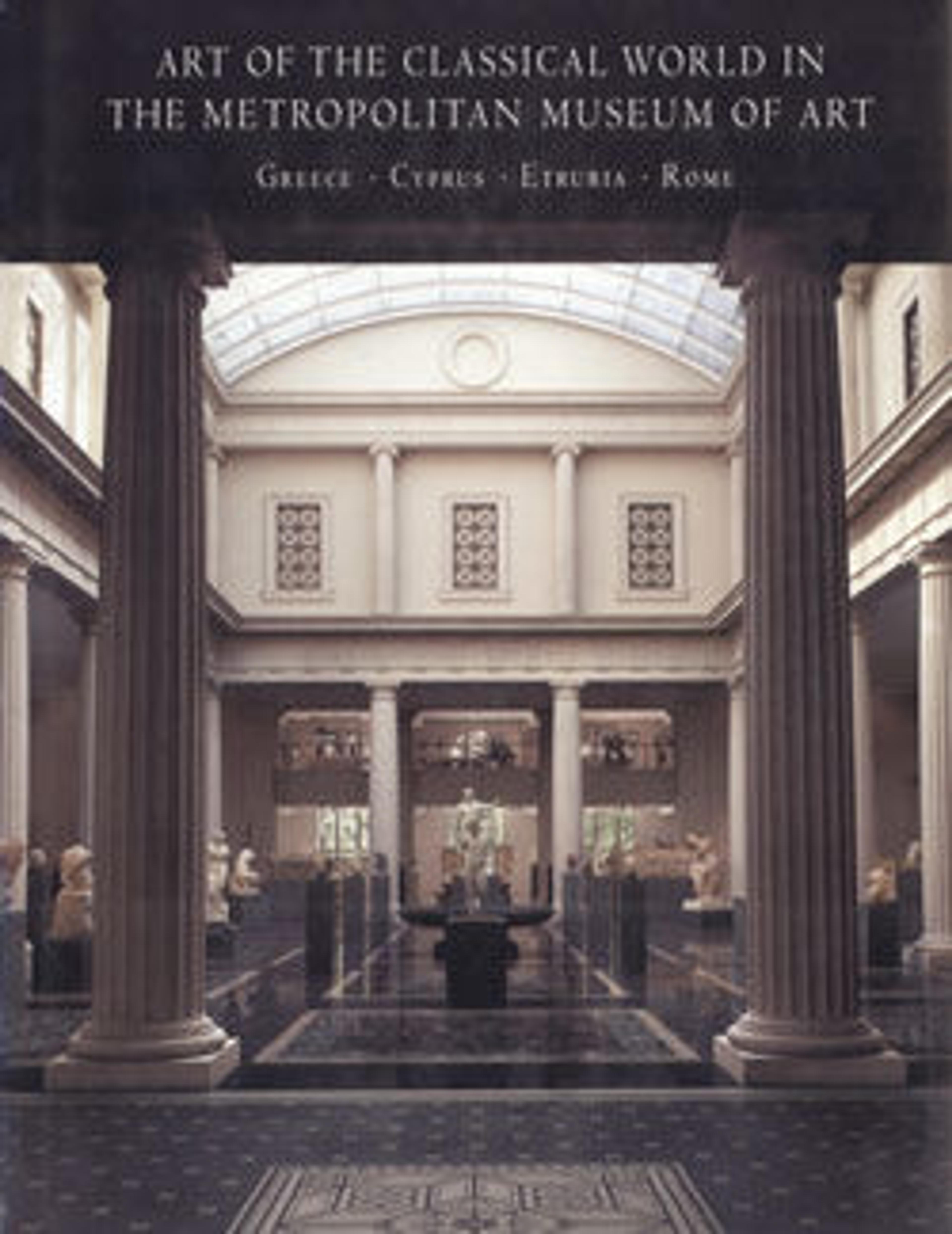Bronze handle attachment in the form of a mask
Despite all the change and innovation in Hellenistic iconography, there was also continuity. The three masks in this case demonstrate the tendency to perpetuate, if not to revive, styles going back to the Classical and even to the Archaic period, a tendency that gained impetus from the second century B.C. on, as Greek artists were being called upon to cater to the demands of the Roman art market.
Images related to Dionysos, Greek god of intoxication and ecstasy, were well suited to the luxurious and hedonistic life that wealthy Romans led in their villas. These handle attachments were for wine buckets. The wreath of ivy leaves and the fillet crossing the forehead are associated exclusively with the god of wine and his followers. The mask brings to mind Archaic images of Dionysos, who until the fifth century B.C. was always shown with long hair and a beard. But the pointed, equine ears on these masks mark them as representations of satyrs or silenoi, the quasi-human woodland creatures in the rowdy entourage of the god.
Images related to Dionysos, Greek god of intoxication and ecstasy, were well suited to the luxurious and hedonistic life that wealthy Romans led in their villas. These handle attachments were for wine buckets. The wreath of ivy leaves and the fillet crossing the forehead are associated exclusively with the god of wine and his followers. The mask brings to mind Archaic images of Dionysos, who until the fifth century B.C. was always shown with long hair and a beard. But the pointed, equine ears on these masks mark them as representations of satyrs or silenoi, the quasi-human woodland creatures in the rowdy entourage of the god.
Artwork Details
- Title:Bronze handle attachment in the form of a mask
- Period:Late Hellenistic or Early Imperial
- Date:1st century BCE–1st century CE
- Culture:Greek or Roman
- Medium:Bronze
- Dimensions:H. 10 in. (25.4 cm)
- Classification:Bronzes
- Credit Line:Bequest of Walter C. Baker, 1971
- Object Number:1972.118.98
- Curatorial Department: Greek and Roman Art
More Artwork
Research Resources
The Met provides unparalleled resources for research and welcomes an international community of students and scholars. The Met's Open Access API is where creators and researchers can connect to the The Met collection. Open Access data and public domain images are available for unrestricted commercial and noncommercial use without permission or fee.
To request images under copyright and other restrictions, please use this Image Request form.
Feedback
We continue to research and examine historical and cultural context for objects in The Met collection. If you have comments or questions about this object record, please contact us using the form below. The Museum looks forward to receiving your comments.
